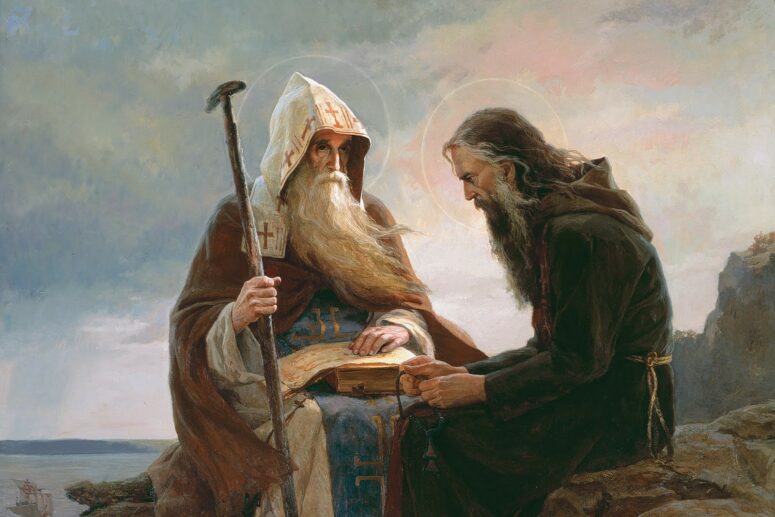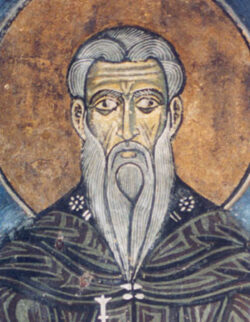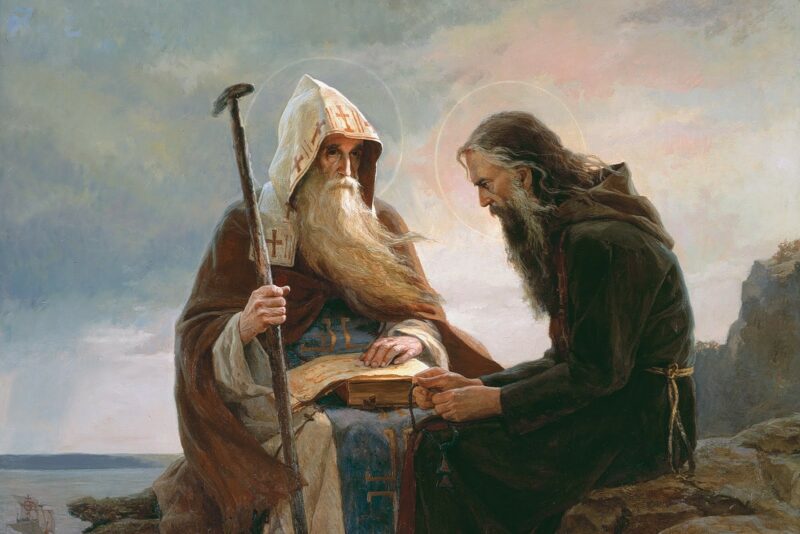
As you know, the early Christians were in constant expectation of the Second Coming of the Lord Jesus Christ, which defined their spirit to a great extent (Matt. 24, Mark 13, Luke 21, Acts 1: 6, James 5: 7-9). Withdrawing from the normal course of life and everyday affairs, they were constantly abiding in Christ with their minds (1 Cor. 7: 29-31).
In view of this, asceticism, as a way of life implying abstinence from superfluity and pleasures, was integral to Christianity from its very beginning. The New Testament (Heb. 5: 13-14; 1 Cor. 14:20; Eph. 4:13; Phil. 3:15) offers a division between “infancy” and “maturity” in faith.
Ancient Christian asceticism was based on the words of Holy Scripture and mainly consisted of celibacy, virginity (1 Cor. 7), martyrdom and widowhood when possible. Other self-restraints also existed and served as means for subduing the body to the spirit. The first mentions of ascetics are found in the writings of the 2nd century apologists. In the 3rd century, asceticism became one of the main components in the life of the ancient church.
At that time, martyrdom was widely considered the highest form of asceticism. Martyrs were ready to testify to their faith despite any circumstances, even the threat of death. According to Clement of Alexandria, a person, entering the road to faith through limitations and self-deprivation, becomes a martyr in the fullest sense of the word, whereas death for Christ is the highest manifestation of this. It is this concept that formed the basis of monasticism.
The development of asceticism and the emergence of the monastic way of life were in some sense facilitated by the persecution of Christians, causing many believers to flee to the deserts and to stay there for an extended period of time. The increasing persecutions against Christians resulted in the growing numbers of ascetics, focusing in their spiritual life on the voluntary poverty that Christ speaks of in Matt. 19:21.
As we can see, ascetic aspirations and certain forms of their manifestation (chastity, fasting, vigilance) appeared as early as in the first three centuries of the Christian era. However, monasticism in its own sense of a conscious withdrawal from the world into solitude, did not appear until the 4th century, when Christianity was recognized as a permissible religion, and the Church came out of the catacombs and began to openly preach.
According to an existing opinion, the first monastics chose to withdraw into the desert in protest against the Church, which came out of the catacombs to find itself in a pagan world and under the auspices of a pagan state. In reality, there is no serious well-founded evidence in favor of this idea. The Church herself has never perceived monasticism as a phenomenon that is opposed to it in any way.
The birthplace of monasticism is Egypt, where the first two monastic communities (St Anthony’s monastery and the community of Abba Amun) were founded independently and almost simultaneously.
Hearing in church the Gospel reading about a rich young man (Matthew 19) at the age of 20, Anthony sold his estate and started practicing asceticism. For some time he was guided by an experienced ascetic, but soon he left the world and his teacher, choosing complete seclusion. After 26 years of desert life, Anthony began to gather disciples around him. He soon became known throughout the empire and even Emperor Constantine the Great once sent a message to him. However, Anthony the Great did not introduce any rules of monastic life. His colonies of hermits united like-minded people into a completely free community under the guidance of an experienced monk.

Being pushed into marriage at the age of 20, Amun convinced his wife to lead a virgin life. After 18 years, Amun went into the wilderness with his three brothers, while his wife joined a community of virgins. Amun then founded an eremitic colony. According to the Lausiac History, Amun’s community had about 500 inhabitants, including both men and women (men’s and women’s cells were at a distance from each other). The monks used bricks to build their own dwellings and ran a household to provide themselves with food and clothing. The community introduced some rudimentary rules, with common meals and general worship services held on Saturday and Sunday. Many of the brothers, following the example of Ammonius, ate only raw vegetables and bread.

However, these desert communities introduced no comprehensive set of rules of monastic life until Pachomius the Great founded cenobitic monasticism, setting clear limits and policies governing labor, prayer, clothing and admission. Today these rules are present in the life of every monastic. St Pachomius is also famous for founding the first women’s monastery for his sister Maria.

Monasticism in Egypt reached its peak by the end of the 4th century, with more and more monastic colonies appearing in the Nile Valley. At the beginning of the 5th century it began to spread further and further from Egypt, taking root in Syria, Palestine and the Balkan Peninsula.
The birth of monasticism occurred naturally in the Christian church as a result of her sincere faith in the imminent Coming of the Lord and the believers’ desire to devote their lives to communion with God, approaching Him as closely as possible.




